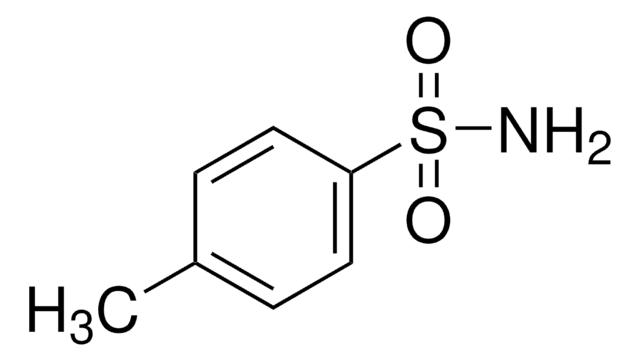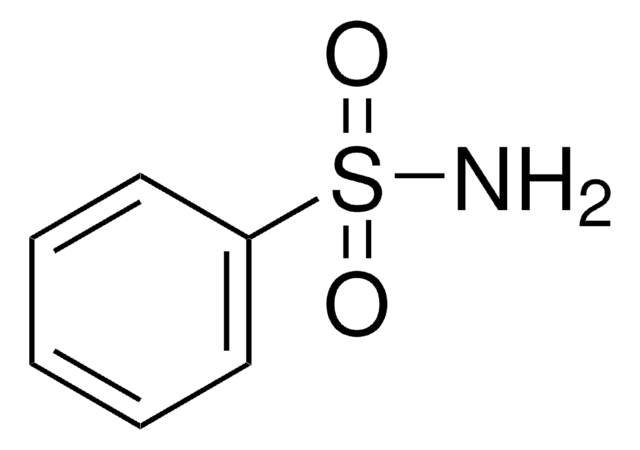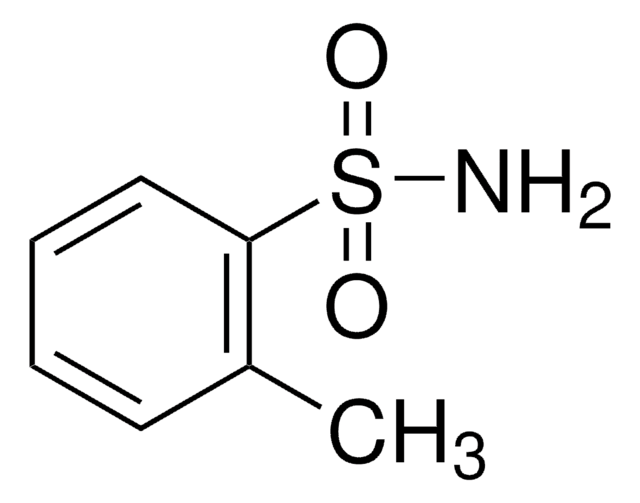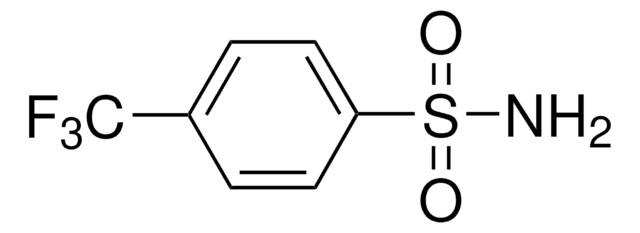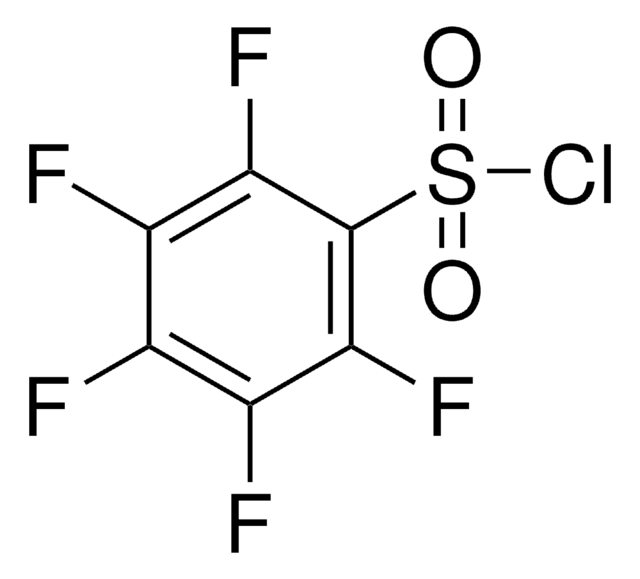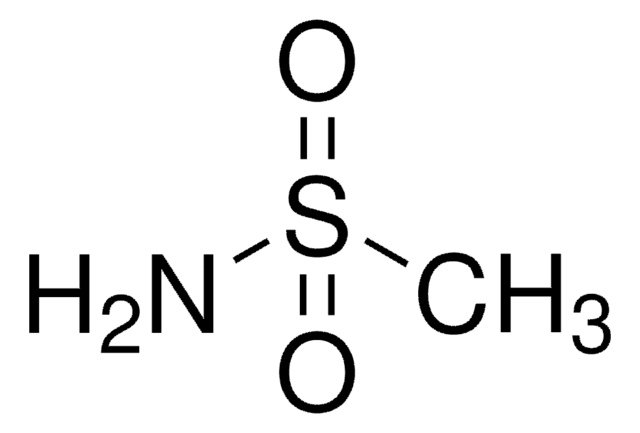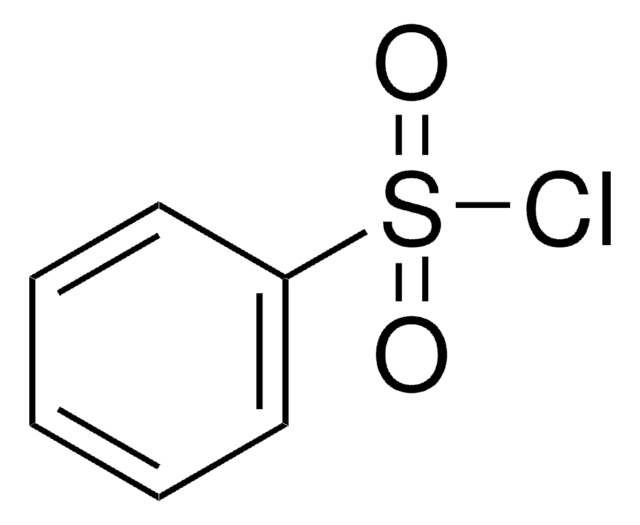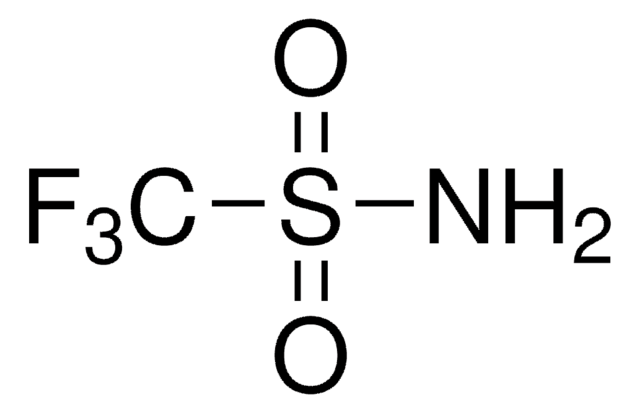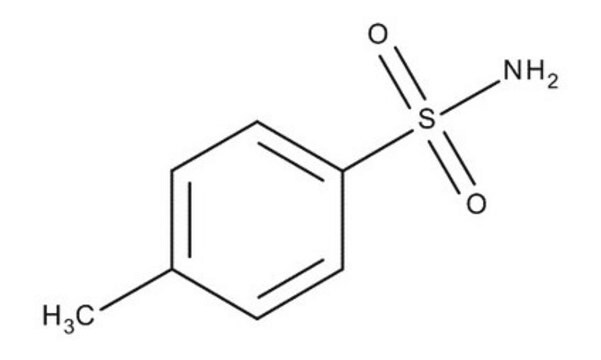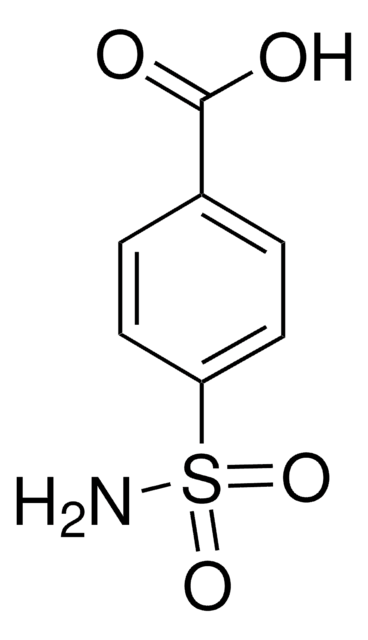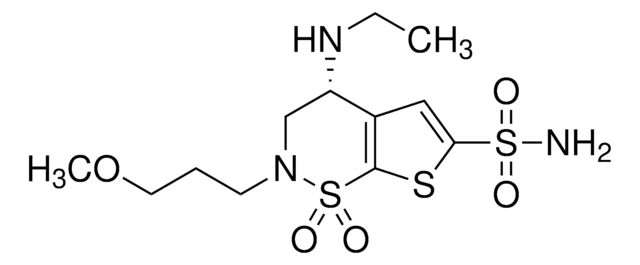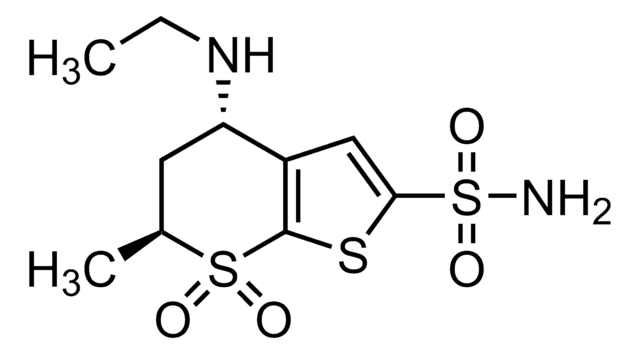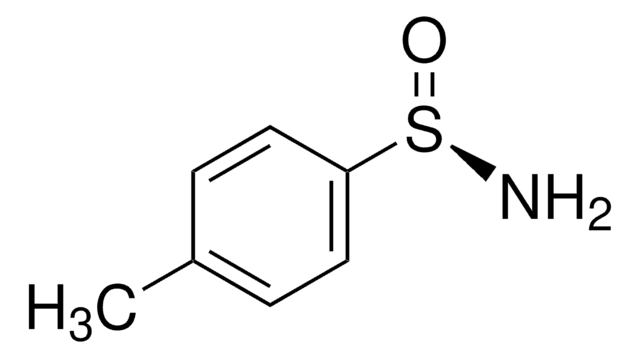105902
p-Toluenesulfonamide
reagent grade, 97%
Synonym(s):
4-Methylbenzene-1-sulfonamide, p-Tosylamide
About This Item
Recommended Products
grade
reagent grade
Quality Level
assay
97%
form
solid
mp
134-137 °C (lit.)
solubility
DMSO: soluble
functional group
sulfonamide
SMILES string
Cc1ccc(cc1)S(N)(=O)=O
InChI
1S/C7H9NO2S/c1-6-2-4-7(5-3-6)11(8,9)10/h2-5H,1H3,(H2,8,9,10)
InChI key
LMYRWZFENFIFIT-UHFFFAOYSA-N
Gene Information
human ... CA1(759) , CA2(760) , CA5A(763) , CA5B(11238)
Looking for similar products? Visit Product Comparison Guide
Related Categories
General description
Application
Storage Class
11 - Combustible Solids
wgk_germany
WGK 1
flash_point_f
395.6 °F - closed cup
flash_point_c
202 °C - closed cup
ppe
dust mask type N95 (US), Eyeshields, Gloves
Choose from one of the most recent versions:
Already Own This Product?
Find documentation for the products that you have recently purchased in the Document Library.
Customers Also Viewed
Our team of scientists has experience in all areas of research including Life Science, Material Science, Chemical Synthesis, Chromatography, Analytical and many others.
Contact Technical Service